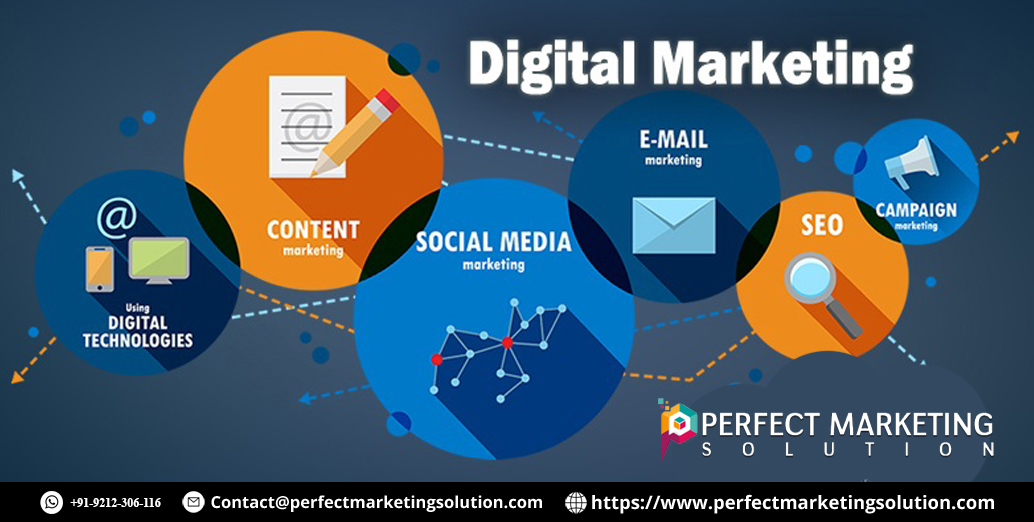Free Online Design Tools to Create Your Visual Identity
Looking to craft a standout visual identity without breaking the bank? Explore our top free online design tools that make it easy to create a professional and unique visual presence. From designing stunning logos to building cohesive brand materials, these tools offer powerful features and user-friendly interfaces to help you shape your brand's visual identity effortlessly. Whether you're a small business owner, a freelancer, or a creative enthusiast, these resources will streamline your design process and enhance your brand's aesthetic appeal.
In the digital age, establishing a strong visual identity is crucial for any business or personal brand. Your visual identity encompasses everything from your logo and color scheme to your typography and overall design aesthetic. Luckily, there are numerous free online design tools available that can help you create a cohesive and appealing visual identity without breaking the bank. This article will explore various tools and resources to help you craft your unique brand identity, ensuring that you stand out in a competitive market.
Understanding Visual Identity and Its Importance
Visual identity refers to the visual elements that represent a brand, including its logo, color palette, typography, and imagery. These elements work together to create a consistent look and feel, helping to convey the brand's values and message. A strong visual identity not only attracts customers but also fosters brand recognition and loyalty. When potential customers can easily recognize your brand through its visual elements, they are more likely to engage with your content and choose your products or services over competitors.
Key Components of Visual Identity
When creating your visual identity, it is essential to consider several key components. Understanding these elements will help you make informed design choices that reflect your brand’s personality and values.
Logo Design
Your logo is often the first thing people will see when they encounter your brand. It should be memorable and visually appealing, encapsulating your brand's essence in a single image. A well-designed logo can evoke emotions and create a strong impression, making it an essential aspect of your visual identity.
Color Palette
Color plays a significant role in branding, as it can evoke emotions and convey messages. Choosing the right color palette for your brand helps to establish its personality and can influence customer perceptions. For instance, blue often conveys trust and reliability, while red can evoke excitement and passion.
Typography
Typography refers to the fonts and typefaces used in your branding materials. The right typography can enhance readability and contribute to your brand’s overall aesthetic. It’s essential to choose fonts that align with your brand’s personality, ensuring they complement your other visual elements.
Imagery and Graphics
High-quality images and graphics can significantly enhance your visual identity. Whether using photographs, illustrations, or icons, the imagery you choose should align with your brand's message and values. Consistency in style and tone is vital to creating a cohesive visual identity.
Free Online Design Tools for Crafting Your Visual Identity
Now that you understand the importance of visual identity and its key components, let’s explore some of the best free online design tools available for creating your brand's visual elements.
Canva: A Versatile Design Platform
Canva is a user-friendly graphic design platform that offers a vast library of templates, images, and design elements. With its drag-and-drop interface, Canva makes it easy for anyone, regardless of design experience, to create stunning visuals. You can design everything from logos and social media posts to presentations and flyers.
Canva provides numerous customization options, allowing you to adjust colors, fonts, and layouts to match your brand’s visual identity. Additionally, you can upload your images and assets, ensuring that your designs remain consistent with your overall branding.
Adobe Express: Simplified Design for All
Adobe Express, formerly known as Adobe Spark, is another excellent tool for creating graphics and marketing materials. With its intuitive interface and extensive library of templates, you can quickly design eye-catching visuals for your brand. Adobe Express allows you to create graphics for social media, web pages, and promotional materials, ensuring a cohesive brand presence across various platforms.
The platform also offers features like animation and video editing, allowing you to create dynamic content that captures your audience's attention. Adobe Express provides a seamless way to produce professional-looking designs without the need for advanced design skills.
Visme: Creating Engaging Presentations and Infographics
Visme is a powerful online design tool that focuses on creating engaging presentations, infographics, and other visual content. With its vast library of templates and design assets, you can easily craft stunning visuals that communicate your brand's message effectively.
Visme allows for interactive content, enabling you to create presentations that engage your audience. The tool also offers analytics features, helping you track how your audience interacts with your visuals. This feedback can be invaluable for refining your content strategy and enhancing your visual identity.
Figma: Collaborative Design for Teams
Figma is a collaborative design tool that enables teams to work together in real-time on design projects. It is particularly useful for businesses looking to create a consistent visual identity across various platforms and marketing materials. With Figma, you can create user interfaces, prototypes, and design systems that align with your brand.
Figma's cloud-based platform allows for seamless collaboration, enabling team members to provide feedback and make edits in real-time. This can be especially beneficial for larger organizations that require input from multiple stakeholders.
Crello: Easy Animation and Graphic Design
Crello is an online design tool that focuses on animated graphics and social media content. With its extensive library of templates, images, and animation options, you can create engaging visuals that capture your audience's attention. Crello’s drag-and-drop interface makes it easy to customize designs and produce eye-catching content.
Whether you’re looking to create social media posts, ads, or marketing materials, Crello provides the tools needed to enhance your visual identity with dynamic content. The ability to create animations adds an extra layer of engagement, helping your brand stand out in a crowded marketplace.
Snappa: Quick and Simple Graphic Design
Snappa is an intuitive graphic design tool that simplifies the design process. With pre-made templates and a user-friendly interface, Snappa makes it easy for anyone to create professional-quality graphics. The tool is ideal for creating social media images, blog graphics, and promotional materials.
Snappa offers a variety of customization options, allowing you to modify colors, fonts, and images to align with your brand’s visual identity. The platform also includes a library of stock photos and graphics, making it easy to find the right visuals for your projects.
Piktochart: Visualizing Data with Infographics
Piktochart specializes in creating infographics and data visualizations, making it an excellent choice for businesses looking to present complex information in an engaging way. With a library of templates and design elements, you can create stunning infographics that effectively communicate your brand’s message.
Piktochart allows you to customize colors, fonts, and layouts to ensure your infographics align with your overall visual identity. This tool is particularly valuable for businesses that rely on data to convey their value proposition, helping you create visuals that resonate with your audience.
Using Social Media Design Tools
In addition to the general design tools mentioned, various platforms focus on social media design. Tools like Buffer and Hootsuite offer features for creating and scheduling social media posts while maintaining brand consistency. By utilizing these tools, you can streamline your social media marketing efforts and ensure your visuals align with your brand identity.
Best Practices for Creating Your Visual Identity
Creating a compelling visual identity involves more than just using design tools. Here are some best practices to keep in mind as you develop your brand’s visual elements.
Define Your Brand’s Personality
Before diving into design, take the time to define your brand’s personality. Consider the values, mission, and target audience of your brand. Understanding your brand’s personality will help guide your design choices and ensure that your visual identity reflects your brand’s essence.
Create a Style Guide
A style guide outlines the design elements that define your brand, including your color palette, typography, logo usage, and imagery guidelines. Having a style guide ensures consistency across all your marketing materials and helps maintain your visual identity as your brand grows.
Stay Consistent Across Platforms
Consistency is key to a strong visual identity. Ensure that your brand’s visual elements remain consistent across all platforms, including your website, social media profiles, and marketing materials. This will help reinforce brand recognition and create a cohesive experience for your audience.
Seek Feedback and Iterate
As you develop your visual identity, seek feedback from peers, customers, and team members. Understanding how others perceive your brand can provide valuable insights and help you refine your design choices. Be open to making adjustments based on feedback to create a visual identity that resonates with your audience.
Creating a strong visual identity is essential for any brand looking to make an impact in today’s digital landscape. With the help of free online design tools, you can craft a cohesive and appealing visual identity that reflects your brand’s personality and values. By understanding the key components of visual identity and utilizing the right tools, you can establish a memorable presence that resonates with your audience. Remember to stay consistent, seek feedback, and iterate on your designs to ensure your visual identity evolves alongside your brand.
What is a visual identity, and why is it important?
A visual identity is the collection of visual elements that represent a brand or organization. This includes the logo, color palette, typography, imagery, and overall design style. Visual identity is crucial because it helps create a consistent and recognizable brand image across various platforms. It communicates the brand's values and personality to the audience, fostering trust and loyalty. A strong visual identity can differentiate a brand from its competitors and enhance its overall marketing efforts.
How do I get started with creating my visual identity?
To create your visual identity, start by defining your brand's core values and target audience. Understand what message you want to convey and how you want your audience to perceive your brand. Next, research visual trends and look at your competitors for inspiration. Once you have a clear vision, you can begin designing your logo, choosing a color palette, and selecting typography. Utilize free online design tools like Canva or Adobe Express to create your visual elements, ensuring consistency across all platforms.
What are the best free tools for designing a logo?
Several free tools are available for designing logos, each offering unique features and templates. Canva is widely popular for its user-friendly interface and extensive library of templates, images, and icons. Another great option is Looka, which uses artificial intelligence to generate logo designs based on your preferences. Adobe Express also provides a variety of logo templates and customization options. Additionally, tools like LogoMakr and Hatchful by Shopify allow for straightforward logo creation, even for those without design experience.
Can I create a cohesive brand identity using free tools?
Yes, you can create a cohesive brand identity using free design tools. Many platforms, such as Canva, Adobe Express, and Visme, offer templates and design assets that ensure consistency across your visual elements. By carefully selecting your color palette, typography, and imagery, you can develop a unified look that reflects your brand’s personality. Remember to create a style guide that outlines your design choices to maintain consistency in all future marketing materials.
What are some tips for choosing a color palette for my brand?
When choosing a color palette for your brand, consider the emotions and associations tied to different colors. Research color psychology to understand how colors influence perceptions. For example, blue is often associated with trust, while red can evoke excitement. Limit your palette to a few primary colors and consider including neutral tones to balance the overall look. Tools like Coolors and Adobe Color can help you generate and visualize color schemes that work well together. Test your color choices in various designs to ensure they maintain consistency across different media.
How can I ensure my visual identity remains consistent across platforms?
To maintain consistency in your visual identity across various platforms, create a style guide that outlines your brand's visual elements, including your logo usage, color palette, typography, and imagery guidelines. This guide will serve as a reference for anyone creating content for your brand, ensuring that all materials align with your overall identity. Additionally, use the same design tools and templates across your marketing channels, and regularly review your materials to ensure they adhere to your established visual identity.
What role does typography play in my visual identity?
Typography plays a crucial role in your visual identity, as it contributes to your brand’s personality and affects readability. The choice of fonts can evoke different emotions and perceptions, making it essential to select typefaces that align with your brand’s message. For example, a tech company may opt for modern sans-serif fonts to convey innovation, while a luxury brand may choose elegant serif fonts for a more sophisticated look. When selecting typography, aim for consistency by using a limited number of fonts across all materials and ensuring they complement each other.
How can I use imagery effectively in my visual identity?
Imagery is an essential component of your visual identity, as it helps convey your brand’s message and values. To use imagery effectively, choose high-quality images that align with your brand’s personality and aesthetics. Consider using a consistent style for your images, whether that be through filters, colors, or subject matter, to maintain a cohesive look. Additionally, ensure that your imagery is relevant to your audience and supports your marketing goals. Tools like Unsplash and Pexels offer a wide range of free stock images that can enhance your visual identity.
What should I include in a style guide for my brand?
A style guide should include essential elements that define your brand’s visual identity. Key components to include are your logo specifications, color palette, typography guidelines, and imagery styles. Additionally, outline how to use each element in various contexts, such as print materials, digital platforms, and social media. Providing examples of correct and incorrect usage can help ensure that your brand’s visual identity remains consistent across all marketing channels.
How do I gather feedback on my visual identity?
Gathering feedback on your visual identity can provide valuable insights into how your audience perceives your brand. Share your designs with friends, family, or colleagues to collect initial impressions. You can also conduct surveys or polls through social media or email to reach a broader audience. Consider asking specific questions about color choices, logo designs, and overall aesthetics. Be open to constructive criticism and use the feedback to refine and enhance your visual identity further.
Is it necessary to hire a professional designer for my visual identity?
While hiring a professional designer can be beneficial, it is not always necessary, especially for startups or individuals on a budget. Many free online design tools allow you to create high-quality visuals without professional experience. However, if your brand grows or you need more complex design elements, hiring a professional designer may be a worthwhile investment. A designer can help ensure that your visual identity is unique and aligns with your overall brand strategy.
Can I change my visual identity over time?
Yes, your visual identity can evolve as your brand grows and changes. It is essential to periodically reassess your visual elements to ensure they still align with your brand’s values and target audience. If you decide to update your visual identity, do so thoughtfully to maintain brand recognition. Consider gradually introducing changes rather than a complete overhaul to help your audience adjust to the new look.
How can I measure the effectiveness of my visual identity?
To measure the effectiveness of your visual identity, track key performance indicators (KPIs) such as brand recognition, engagement rates, and customer feedback. Monitor how well your audience responds to your visuals across various platforms. Additionally, analyze metrics such as website traffic, social media engagement, and conversion rates to determine whether your visual identity is resonating with your target audience. Conducting surveys or focus groups can also provide insights into how well your visual identity aligns with your brand message.
These FAQs provide valuable insights and guidance on creating and managing a visual identity using free online design tools, ensuring that individuals and businesses can effectively represent their brands in a competitive marketplace.
Get in Touch
Website – https://www.webinfomatrix.com
Mobile - +91 9212306116
Whatsapp – https://call.whatsapp.com/voice/9rqVJyqSNMhpdFkKPZGYKj
Skype – shalabh.mishra
Telegram – shalabhmishra
Email - info@webinfomatrix.com
What's Your Reaction?





















